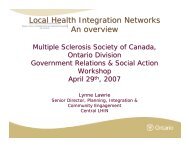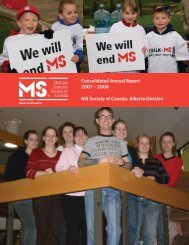Evidence-based medicine (EBM)
Evidence-based medicine (EBM)
Evidence-based medicine (EBM)
You also want an ePaper? Increase the reach of your titles
YUMPU automatically turns print PDFs into web optimized ePapers that Google loves.
clinical studies, controlled clinical trials, or randomized controlled trials). In the case of<br />
treatment, this research tells us whether a particular treatment is likely to work, how<br />
well it works compared to other treatments, and what the risks of the treatment are.<br />
The study participants (often patients) are divided randomly into two or more<br />
groups. One of the groups is given the experimental treatment and the other<br />
is given either an alternative treatment (a previously established and known<br />
effective treatment) or a placebo treatment. Placebo treatments use “inert”<br />
compounds, which have no direct therapeutic effects. The key is that the<br />
participants must be divided into groups absolutely randomly, to ensure that<br />
the groups are comparable right from the start and that the only difference<br />
between the groups is the treatment.<br />
At the end of the study, the differences in outcomes between the groups<br />
(both therapeutic outcomes and unwanted outcomes such as side effects) are<br />
statistically analyzed from group data. Predetermined acceptable levels of<br />
probable outcomes (that is, outcomes that are less likely due to chance alone)<br />
help guide the interpretation of the study results.<br />
Although clinical trials all follow the same basic framework, the details can<br />
differ considerably between trials (e.g. length of study, number of participants<br />
enrolled in the study, etc.). Sometimes a study involving 50-100 people and<br />
spanning a week or two is suffi cient, but sometimes many thousands of people<br />
need to be included and followed for many years. For long-term chronic diseases<br />
(e.g. cancer, diabetes, schizophrenia, etc.), many people need to be studied for<br />
long periods of time in order to reveal useful information about what is the<br />
best treatment approach. Studies with large numbers of participants often (but<br />
defi nitely not always) provide stronger evidence than studies with small numbers<br />
of participants.<br />
(b) The preponderance of evidence<br />
Medical treatments are built on the preponderance of scientifi c evidence. The<br />
treatments with the highest levels of validity (the most certainty that they are<br />
effective and safe) are those on which large numbers of clinical trials have been<br />
conducted in different settings and in different types of patients and in which<br />
the results are generally similar.<br />
12
















